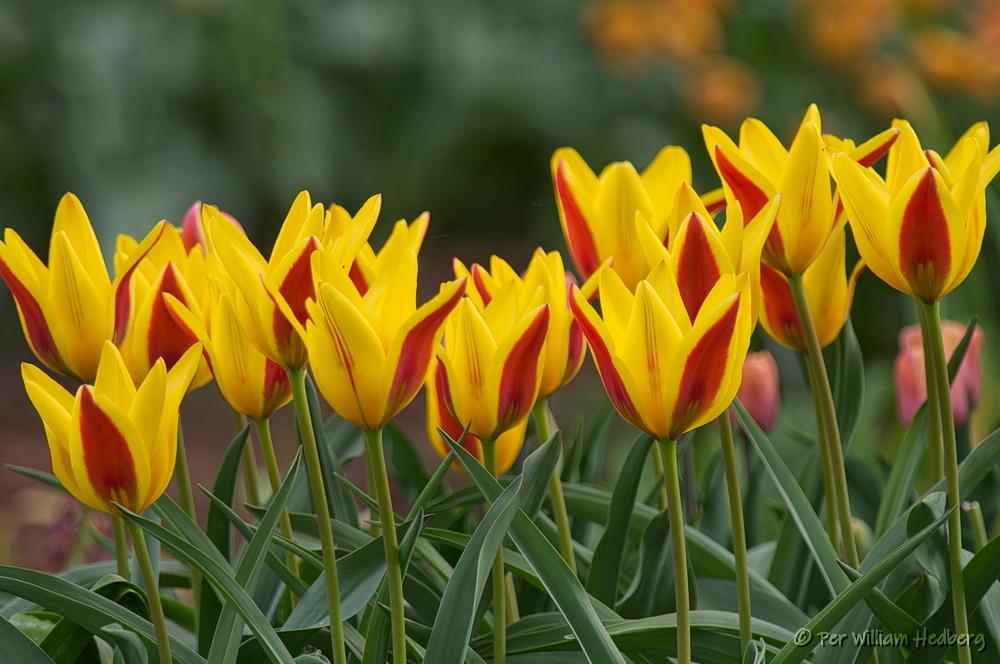How to Grow and Care for Tulips
Introduction
A favorite spring blooming bulb,
tulips are anticipated worldwide as a sign of spring. Tulip blooms come in a vast array of options in bloom color, petal differences (fringed, ruffles, single and double rows), plant height (6 inches to two feet) , blooms size, and bloom time (early, mid, and late-spring).
About tulips
From stately formal plantings, containers, or naturalized woodland areas, there's a type of tulip for every garden setting. Tulips grow best in areas with cold winters, cool springs, and cool summers. The smaller species and heirloom tulips are reliably perennial, while larger, newer variety types usually need to be replanted every few years, or even every year for reliable blooms. By planting varieties with different bloom times, you can have tulips blooming from early to late spring. Some types are good for forcing into bloom indoors, and all varieties can be grown in containers.
Growing Zones for Tulips
Tulips can be grown in zones 3-7. In warmer zones, gardeners can purchase pre-chilled bulbs (or chill them yourself in a refrigerator for 10 weeks) , plant in winter, and grow as an annual.
Choosing a site to grow tulips
Select a site with full sun to light shade and well-drained soil. Tall varieties should be sheltered from strong winds.
Planting Instructions for Tulips
Plant tulip bulbs in fall, six to eight weeks before a hard frost is expected and when soils are below 60 degrees F. This is usually during September and October in the north, and October and November in the south. Prepare the garden bed by using a garden fork or tiller to loosen the soil to a depth of 12 to 15 inches, then mix in a 2- to 4-inch layer of compost. Dig a hole about three times as deep as the height of the bulb. Set the bulb in the hole, pointy end up, then cover with soil and press firmly. Space bulbs 4 to 6 inches apart. Water thoroughly after planting.
Fertilizer for Tulips
Tulips should only be fertilized in the fall if growing as a perennial. This is when the bulbs are sending out roots and storing up nutrients for next spring's bloom. Whether newly planted or established bulbs, do not fertilize in the planting hole or dig down. Instead, spread your fertilizer on top of the soil; this is known as top-dressing. Choose a slow release fertilizer 9-9-6 made for bulbs or mix If growing as an annual, you do not need to fertilize.
Tulip Pests and Problems
Easy to grow, tulips are not faced with many problems. Let's cover the most popular ones:
- Disappearing bulbs: Plant bulbs in buried wire cages to protect them from getting eaten.
- Blossom stalks are short: Not enough chilling; unseasonably warm winter and spring temperatures
- Leaves appear, but plants don't bloom: Not enough chilling; leaves removed too soon the previous year; poor soil fertility; not enough sun
- Over the years, fewer plants and blossoms appear: Decline due to overcrowding, poor soil fertility, increasing shade
Ongoing Care for Tulips
Keep tulips watered during dry periods.
After plants are finished flowering in spring, cut back flower stalks but allow the leaves to die back naturally, hiding the unsightly foliage with annual or perennial plantings.
If bulbs have become crowded and are competing, dig and divide them. Reduce competition from surrounding plants by weeding and mowing regularly.
